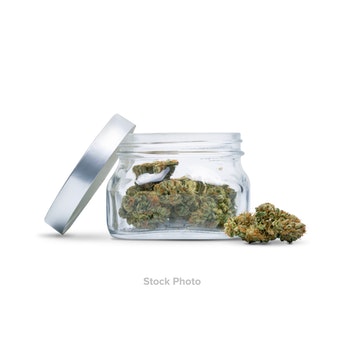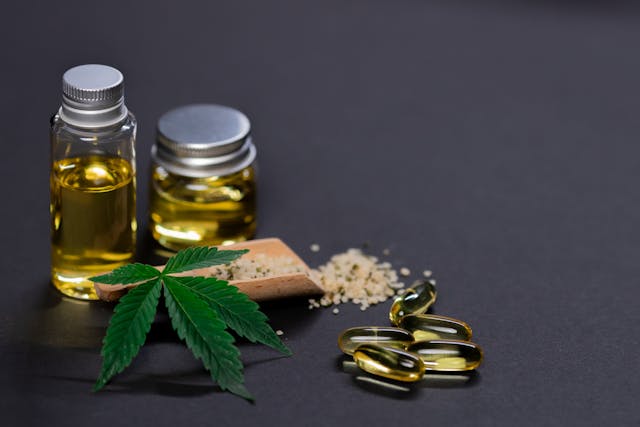Imagine you’re a chef crafting a delicate sauce, each ingredient contributing to the final masterpiece. Just like in cooking, precision and technique are crucial when it comes to home cannabis oil extraction.
From safety precautions to troubleshooting issues, these 10 tips will help you navigate the complexities of creating high-quality cannabis oil at home.
So, are you ready to elevate your extraction game and unlock the full potential of your cannabis plants?
Table of Contents
Safety Precautions
Before engaging in home cannabis oil extraction, prioritize safety precautions to prevent accidents and ensure a smooth process. Safety goggles are crucial to shield your eyes from potential splashes of hot liquids or chemicals. Additionally, wearing gloves is essential to protect your skin from irritation or burns when handling equipment or substances. Ensure proper ventilation in the extraction area to prevent the buildup of potentially harmful fumes. Fire extinguishers should be readily available in case of emergencies, as the extraction process involves flammable materials.
When working with heat sources, such as hot plates or open flames, always be cautious and attentive to avoid accidental fires. Proper labeling of all containers holding chemicals or solvents is necessary to prevent mix-ups that could lead to dangerous reactions. Keep a first aid kit nearby in case of minor injuries, and familiarize yourself with the proper procedures for handling spills or accidents. By following these safety precautions diligently, you can significantly reduce the risks associated with home cannabis oil extraction.
Related Article: Select Long-Term Cannabis Use and Mental Health Outcomes
Choosing the Right Strain
When selecting a strain for cannabis oil extraction, it’s crucial to consider factors such as:
- THC and CBD levels
- Terpene profiles
- Desired effects
Understanding the unique effects of different strains is essential in achieving the desired outcome for your cannabis oil. By choosing the right strain, you can tailor your extraction to meet specific needs, whether for pain relief, relaxation, or other therapeutic purposes.
Strain Selection Tips
Selecting the right strain is crucial for optimal results when extracting cannabis oil at home. Consider the cannabinoid content, terpene profile, and desired effects when choosing a strain.
High-THC strains like OG Kush or Girl Scout Cookies are suitable for potent oil, while high-CBD strains like Charlotte’s Web are better for medicinal purposes.
Indica strains such as Granddaddy Purple provide relaxing and sedating effects, ideal for evening use, whereas Sativa strains like Green Crack offer energizing effects, suitable for daytime consumption.
Hybrid strains like Blue Dream combine the best of both worlds, providing a balanced experience.
Experiment with different strains to find the one that best suits your preferences and extraction needs.
Effects and Uses
For optimal results in home cannabis oil extraction, consider the effects and uses of different strains when choosing the right one for your extraction needs. When selecting a strain, keep in mind the following:
- THC vs. CBD Ratio: Determine whether you prefer a strain with higher THC levels for its psychoactive effects or a higher CBD content for potential therapeutic benefits.
- Terpene Profile: Consider the terpenes present in the strain as they can affect the aroma, flavor, and potential medicinal properties of the oil.
- Sativa vs. Indica: Understand the differences between sativa and indica strains; sativas are often energizing and uplifting, while indicas are more relaxing and sedating. Choose based on the desired effects of your cannabis oil.
Decarboxylation Process
To achieve proper decarboxylation of cannabis, ensure even distribution of heat throughout the material. Decarboxylation is a crucial step in the cannabis extraction process as it activates the cannabinoids, making them more bioavailable when consumed.
Start by preheating your oven to around 240°F (115°C) and evenly spread your cannabis on a baking sheet lined with parchment paper. It’s essential to grind the cannabis to a fine consistency to ensure uniform decarboxylation.
Place the baking sheet in the preheated oven and set a timer for 30-45 minutes. During this time, monitor the color change of the cannabis. Properly decarboxylated cannabis will turn a slightly darker shade of green and become more fragrant. Be cautious not to overheat the material, as this can degrade the cannabinoids and terpenes, diminishing the final product’s quality.
After the decarboxylation process is complete, allow the cannabis to cool before proceeding with your chosen extraction method. Properly decarboxylated cannabis will result in a more potent and effective final product.
Selecting the Extraction Method
When selecting an extraction method for cannabis oil, it’s crucial to consider factors such as efficiency, yield, and safety. Different methods offer varying levels of cannabinoid extraction and require distinct levels of expertise.
Safety considerations should always be a top priority to prevent accidents and ensure a high-quality final product.
Method Comparison
Consider the efficiency and safety aspects of each extraction method when selecting the most suitable technique for home cannabis oil extraction. Here are three key factors to compare the methods:
- Extraction Efficiency:
- Evaluate how well each method extracts cannabinoids from the plant material.
- Safety Precautions:
- Compare the safety measures required for each technique, such as ventilation needs or potential fire hazards.
- Equipment Accessibility:
- Assess the availability and affordability of the required equipment for the extraction method chosen.
Safety Considerations
For optimal safety in selecting an extraction method, prioritize assessing the potential risks inherent in each technique. Consider the use of solvents like butane or ethanol, which pose fire hazards and require proper ventilation due to their flammability.
Mechanical methods, such as rosin pressing, are generally safer but can still cause burns if mishandled. CO2 extraction, while complex, eliminates the need for potentially hazardous solvents.
Evaluate your familiarity with the equipment and processes involved, as improper use can lead to accidents. Always wear appropriate personal protective equipment, including gloves and eye protection, to minimize risks.
Prioritize safety above all else when choosing an extraction method to ensure a secure and successful home cannabis oil extraction process.
Understanding Solvents
Understanding the role of solvents is crucial in the process of home cannabis oil extraction. Solvents are substances capable of dissolving cannabinoids and terpenes from the cannabis plant material, allowing for the extraction of these valuable compounds.
Here are three key points to consider when working with solvents for cannabis oil extraction:
- Selecting the Right Solvent: Different solvents have varying levels of effectiveness, safety, and legality for home extraction. Common solvents include ethanol, butane, and CO2. Ethanol is popular due to its effectiveness and safety profile, while butane is highly efficient but requires careful handling to prevent accidents. CO2 is considered safe and produces high-quality extracts but requires specialized equipment.
- Purging the Solvent: After extraction, it’s crucial to purge the solvent completely from the oil to avoid any health risks. Methods like vacuum purging or using a rotary evaporator can help remove residual solvents effectively.
- Safety Measures: Always work in a well-ventilated area, away from open flames or heat sources when handling solvents. Wear appropriate personal protective equipment such as gloves and safety goggles to prevent accidents.
Temperature Control Tips
When extracting cannabis oil at home, ensuring optimal heat levels is crucial for successful results. Precision temperature monitoring throughout the extraction process is key to obtaining high-quality oil.
Maintaining the right temperature range will help maximize the potency and purity of your final product.
Optimal Heat Extraction
To achieve optimal heat extraction during cannabis oil processing, maintain precise temperature control throughout the extraction process.
- Use a Quality Heat Source: Invest in a reliable heat source such as a water bath or hot plate to ensure consistent temperatures during extraction.
- Monitor Temperature Fluctuations: Keep a close eye on temperature changes and adjust settings as needed to prevent overheating or under-extraction.
- Control Heat Exposure: Avoid sudden temperature spikes or drops that can degrade the quality of the final product; maintain a steady heat level for the duration of the extraction process.
Precision Temperature Monitoring
Maintain precise control over the temperature fluctuations by implementing meticulous monitoring techniques during the cannabis oil extraction process. Use a reliable thermometer to ensure accuracy within a narrow range, typically around 220-240°F (104-116°C) for decarboxylation and 130-150°F (54-65°C) for infusions.
Monitor the temperature consistently throughout the extraction process, adjusting heat sources promptly to avoid overheating or cooling below the desired range. Utilize tools like digital temperature controllers or water baths for more stable heat regulation.
Prevent rapid temperature changes that can degrade cannabinoids and terpenes by controlling the heating elements carefully. Remember, even slight temperature variations can significantly impact the quality and potency of your final cannabis oil product.
Filtering and Straining Techniques
For optimal quality, ensure that the cannabis oil is carefully filtered and strained using fine mesh filters or cheesecloth. Filtering and straining techniques are crucial steps in the cannabis oil extraction process to remove impurities and plant material, resulting in a cleaner and more potent final product.
Tips for Filtering and Straining Techniques:
- Use Fine Mesh Filters: Select a fine mesh filter to strain the cannabis oil thoroughly. This helps remove any remaining plant material or particles, ensuring a smoother consistency and cleaner oil.
- Cheesecloth Method: Utilize cheesecloth as an alternative to fine mesh filters. Cheesecloth is effective in straining the oil and is easily accessible for home extraction processes.
- Double Straining: Consider double straining the oil for an even purer product. After the initial strain, repeat the process using a fresh filter or cheesecloth to catch any missed particles and further refine the oil.
Proper Storage Practices
After ensuring the cannabis oil is meticulously filtered and strained, the next essential step is implementing proper storage practices to maintain its quality and potency over time. To preserve the integrity of your homemade cannabis oil, store it in a cool, dark place away from direct sunlight and heat sources. Light, heat, and oxygen can degrade the cannabinoids and terpenes in the oil, reducing its effectiveness. Therefore, storing the oil in an airtight container in a pantry or refrigerator is ideal.
It is crucial to label the storage container with the extraction date and strain used to create the oil. This information will help you track the oil’s potency and effects over time. Additionally, make sure the container is opaque to prevent light exposure. Avoid storing cannabis oil near strong-smelling substances, as it can absorb odors easily.
Remember to check the oil periodically for any signs of mold, discoloration, or off smells. If you notice any of these indicators, it’s best to discard the oil to prevent any potential health risks. Proper storage practices are essential for maintaining the quality and potency of your homemade cannabis oil.
Testing for Potency
Consider utilizing a reputable laboratory service to accurately assess the potency of your homemade cannabis oil. Testing the potency of your cannabis oil is crucial to understanding its strength and ensuring a consistent experience.
Here are three key points to keep in mind when testing for potency:
- Accurate Results: A reputable laboratory will use precise testing methods, such as high-performance liquid chromatography (HPLC) or gas chromatography (GC), to provide you with accurate potency results. This information allows you to adjust your dosage and consumption accordingly.
- Understanding THC and CBD Levels: Potency testing will determine the levels of THC (tetrahydrocannabinol) and CBD (cannabidiol) in your cannabis oil. This knowledge is essential for medical users seeking specific therapeutic effects or recreational users looking for a particular high.
- Quality Control: Regular potency testing ensures the consistency and quality of your homemade cannabis oil batches. By monitoring potency levels over time, you can fine-tune your extraction techniques for better results.
Troubleshooting Common Issues
To address any challenges that may arise during the extraction process, it’s essential to troubleshoot common issues encountered when making cannabis oil at home. One common problem is inefficient extraction, which may result from using low-quality starting material or inadequate extraction methods. To improve efficiency, ensure you’re using high-quality cannabis flower and follow a reliable extraction method such as the alcohol extraction process.
Another issue is improper decarboxylation, which can lead to low potency in the final product. To troubleshoot this, make sure to decarboxylate your cannabis at the correct temperature and for the appropriate duration to activate the cannabinoids fully. Additionally, filtration problems, such as clogged filters, can hinder the extraction process. To address this, use proper filtration techniques and replace filters regularly.
Lastly, inconsistent dosing in the final product may occur due to uneven distribution of cannabinoids. To troubleshoot this, ensure thorough mixing of the oil to achieve a homogeneous blend for consistent dosing.
Frequently Asked Questions
Can I Use Any Type of Cannabis Strain for Oil Extraction, or Are There Specific Strains That Work Best?
You can use any cannabis strain for oil extraction, but some strains may produce better results due to their cannabinoid and terpene profiles. Experiment with different strains to find the one that works best for you.
Are There Any Potential Risks or Side Effects Associated With Home Cannabis Oil Extraction That I Should Be Aware Of?
Be cautious as potential risks include fire hazards, chemical exposure, and product contamination. Side effects may arise from improper extraction leading to toxic compounds. Prioritize safety measures, proper ventilation, and follow precise guidelines.
How Can I Determine the Potency of My Homemade Cannabis Oil Without Professional Testing Equipment?
To gauge homemade cannabis oil potency without pro equipment, employ a simple home test. Mix a small amount with a known amount of carrier oil. Start with a low dose and monitor effects carefully.
Are There Any Specific Tools or Equipment That Are Essential for Successful Cannabis Oil Extraction at Home?
To successfully extract cannabis oil at home, essential tools include a quality herb grinder, a double boiler or slow cooker, a fine mesh strainer or cheesecloth, and a glass container for storage. These tools ensure efficient extraction and quality results.
Is It Possible to Extract Different Types of Cannabinoids (Such as CBD or Cbg) Using the Same Extraction Method, or Do I Need to Adjust My Process for Each Type?
You can extract different cannabinoids like CBD or CBG using the same method, but tweak variables for each. Adjust temperature, time, and solvent type to suit specific cannabinoids. Experimentation and precise control are key for optimal extraction results.
Conclusion
In conclusion, mastering home cannabis oil extraction techniques requires attention to detail and adherence to safety protocols. By following the tips outlined in this article, you can confidently create high-quality cannabis oil at home.
Remember to always prioritize safety, choose the right strain, and properly store your oil to maintain potency. With practice and patience, you can perfect your extraction process and enjoy the benefits of homemade cannabis oil.




